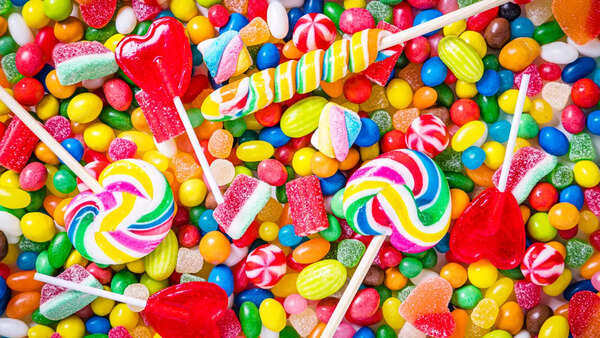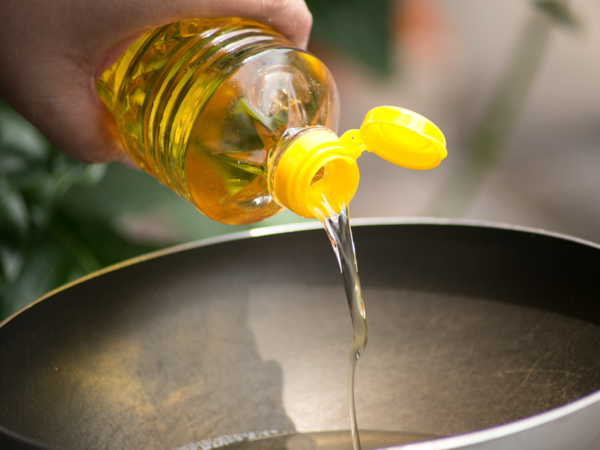Many seemingly harmless store-bought foods contain hidden ingredients that pose significant health risks. Food dyes like Red 40 and Yellow 5 are linked to hyperactivity, while titanium dioxide, used to whiten foods, is classified as a potential carcinogen. Other concerning additives include brominated vegetable oil, potassium bromate, and high fructose corn syrup, all associated with various health problems.
Store-bought ingredients and foods may appear safe, but they present ongoing health challenges. Simply reading the label might not be enough to protect you from potential harm. From your favorite breakfast cereal to that supposedly healthy protein bar, hidden ingredients could be silently affecting your well-being. Here's a look at some common ingredients that can negatively impact your health.

Food dyes are prevalent, found in everything from candies to flavored rice. While these synthetic dyes enhance the color and appeal of food, they come at a significant cost. Artificial food dyes, such as Red 40 and Yellow 5, pose notable health risks. These dyes have been linked to neurobehavioral problems, especially in children, with research suggesting increased hyperactivity. Earlier this year, the US Food & Drug Administration (FDA) banned Red No. 3, used to give foods and beverages a bright cherry-red color, due to its association with cancer. However, it continues to be used in several countries.

The appeal of certain foods often stems from the presence of titanium dioxide, a chemical used to whiten products like coffee creamers, candies, sunscreen, and toothpaste. However, the FDA classifies this chemical as a Group 2B carcinogen. The nanoparticles in titanium dioxide can trigger inflammation and oxidative stress.

Brominated vegetable oil (BVO) serves as an emulsifier in food products, particularly in citrus-flavored drinks. It prevents flavor oils from separating. Studies link BVO to neurological issues, thyroid dysfunction, and heart and liver damage. While banned in Europe and the US, it remains in use in several other countries.

Potassium bromate is a flour additive used in bread-making. This chemical strengthens the dough. However, the World Health Organization classifies it as a possible human carcinogen. This ingredient is banned in Europe, Canada, and other regions. Potassium bromate is a nephrotoxin in both animals and humans and has been linked to kidney and thyroid tumors in animals.

High fructose corn syrup (HFCS) is a sweetener found in sodas and snacks and is a leading contributor to obesity and diabetes. Research indicates that HFCS intake disrupts metabolism, increasing fat storage and insulin resistance. From sugary drinks to processed foods, this ingredient is widespread.
Newer articles
Older articles
 Rishabh Pant: Greg Chappell Hails India Star as Cricket Revolutionary
Rishabh Pant: Greg Chappell Hails India Star as Cricket Revolutionary
 Shadman Islam Backs Bangladesh Batters Despite Day 1 Setbacks Against Sri Lanka
Shadman Islam Backs Bangladesh Batters Despite Day 1 Setbacks Against Sri Lanka
 Bumrah Boosts India's Hopes: Star Pacer Returns to Bowling Drills Ahead of Edgbaston Test
Bumrah Boosts India's Hopes: Star Pacer Returns to Bowling Drills Ahead of Edgbaston Test
 Black Caps Set for Blockbuster Home Summer Against Cricket Giants
Black Caps Set for Blockbuster Home Summer Against Cricket Giants
 Harshit Rana Released from India's Test Squad Ahead of Second England Clash
Harshit Rana Released from India's Test Squad Ahead of Second England Clash
 Hydration Habits Could Significantly Cut Hypertension, Heart Failure Risk, Study Finds
Hydration Habits Could Significantly Cut Hypertension, Heart Failure Risk, Study Finds
 Prasidh Krishna Vows to Sharpen Bowling Accuracy After Expensive Spell
Prasidh Krishna Vows to Sharpen Bowling Accuracy After Expensive Spell
 Gavaskar Calls for Kuldeep Yadav's Inclusion in Second Test Amid Bumrah Fitness Concerns
Gavaskar Calls for Kuldeep Yadav's Inclusion in Second Test Amid Bumrah Fitness Concerns
 Mirabai Chanu Reveals Relentless Training Demands, Weight Concerns Impact Family Time
Mirabai Chanu Reveals Relentless Training Demands, Weight Concerns Impact Family Time
 India's Fielding Blunders Under Scrutiny After First Test Loss to England
or
Ex-Selector Blasts India's Costly Dropped Catches in England Test Defeat
India's Fielding Blunders Under Scrutiny After First Test Loss to England
or
Ex-Selector Blasts India's Costly Dropped Catches in England Test Defeat